John Coltrane - Naima
John Coltrane - Naima
In January 1960, Atlantic Records released John Coltrane's first monumental LP, “Giant Steps.” The album would drastically change the tenor saxophone's sound and purpose. But of all the hair-raising originals on “Giant Steps,” the one that became most important to Coltrane's repertoire was “Naima.“ After the song's debut on “Giant Steps,” Coltrane recorded the composition about a dozen times, each in a different way. By contrast, Coltrane never recorded “Giant Steps,” the title track, again after the album was released.
Naima
John Coltrane's original recording of "Naima" is extraordinarily beautiful, and it's possible that he never envisioned such a breathtaking version being played so many years after it had been composed. “Naima” was first recorded in May 1959 on with Tommy Flanagan on piano, Paul Chambers on bass, and Art Taylor on drums; however, the session wasn’t released until early 1960.
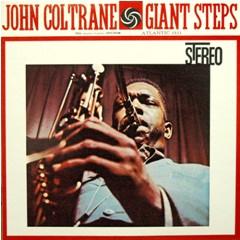
“Giant Steps” album
"Naima" is a ballad that's so slow and reverential that it seems to stand still, suspended in mid air. Written as a love letter to his first wife, Naima, the song was Coltrane's favorite composition. "The tune is built on suspended chords over an E-flat pedal tone on the outside," Coltrane told Nat Hentoff for the album's original liner notes. "On the inside—the channel—the chords are suspended over a B-flat pedal tone."
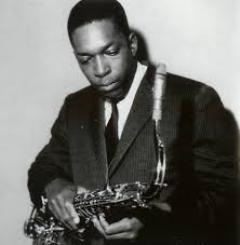
John Coltrane
Hentoff continues in the notes: "There is a 'cry'—not at all necessarily a despairing one—in the work of the best of the jazz players. It represents a man's being in thorough contact with his feelings, and being able to let them out, and that 'cry' Coltrane certainly has."
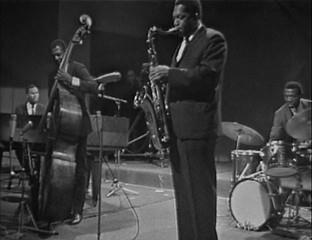
John Coltrane Quartet
Coltrane met Naima Grubbs(Juanita was her given name) in 1953, at the home of bassist Steve Davis. She was working as a seamstress in a factory to support herself and her five-year old daughter Antonia (who later would be named Saeeda). Coltrane called Naima "Nita," short for her given name.
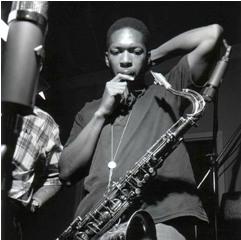
John Coltrane
Coltrane and Naima were married in October 1955, just after Coltrane joined the Miles Davis Quintet. Coltrane and Naima moved to New York in 1956 with Naima's daughter Saeeda. By then, Davis had folded the quintet, largely a result of Coltrane's addictions and unpredictable behavior and playing.
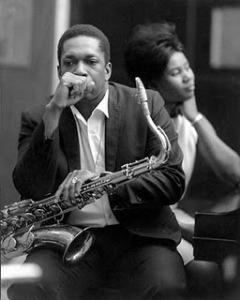
John and Naima
When Davis hired him in 1955, Coltrane's sound was pretty well in place but he was also addicted to narcotics and alcohol. Davis fired Coltrane twice for drug dependency. After the second time, in 1957, Coltrane cleaned up his life after undergoing a religious experience that led him to devote his life entirely to music. He spent a year playing with and being educated by Monk. He freelanced, composed ("Blue Train," "Moment's Notice"), and exhibited a facility with rapid tempos and romantic ballads. In 1959 he signed with Atlantic Records. Coltrane explored the relationship between chords and scales as he composed more complicated harmonic sequences.
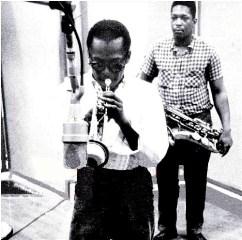
Miles Davie and John Coltrane
John Coltrane’s “Naima” is a classic of modern jazz. The song is a fully developed composition: strong harmonic structure, a gorgeous melody and a closing motif that sets it apart from most compositions which generally conclude with a simple recapitulation of the opening theme. Instead, "Naima" distinctively concludes with a thrice-repeated rising phrase.
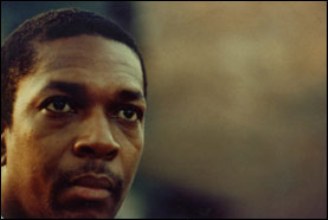
John Coltrane
In ‘The Freedom Principle: Jazz After 1958’ John Litweiler says, “The dogged simplicity that usually rushed in violent symmetrical lines now appears in spare form in the long-toned theme of ‘Naima’ as the purest of lyricism; embellishment, activity would violate this precious fragility. His tone is soft, and the setting is as simple as possible, over a one-note bass pedal; the melody of ‘Naima’--quiet, sunfilled--is worthy of Coltrane’s reverence, the unsuspected calm in the midst of his storms....”
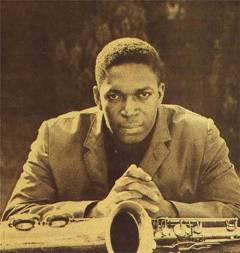
John Coltrane
Despite years spent supporting Coltrane and helping to inspire his artistic direction, Naima has been all but forgotten. Very little is known about her, and little credit has been given to her for her indirect contribution to jazz. According to Lewis Porter in ‘John Coltrane: His Life and Music,’ Coltrane also composed “Wise One” for Naima and “Syeeda’s Flute Song” for her daughter. Porter also claims that the hymnlike “Naima,” which stayed in his repertoire even after the couple broke up, was considered by Coltrane to be his best composition.
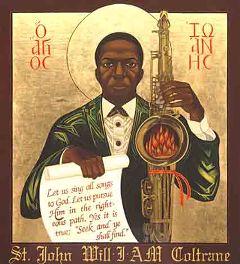
Coltrane icon at St. John Coltrane African Orthodox Church








